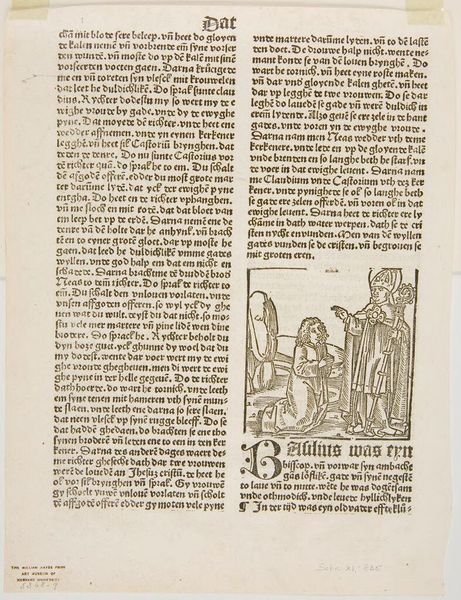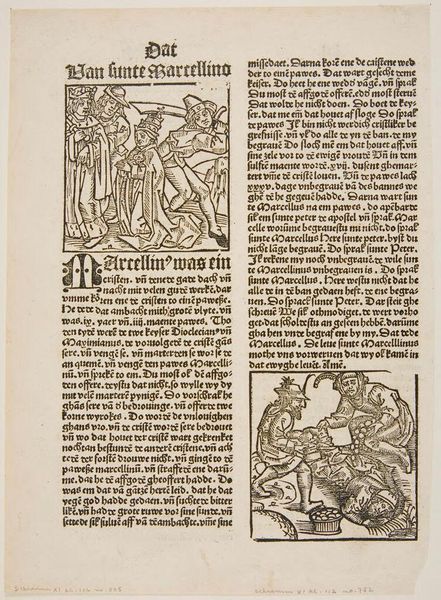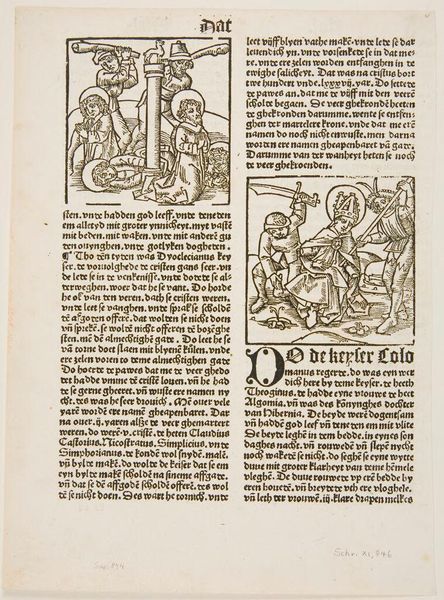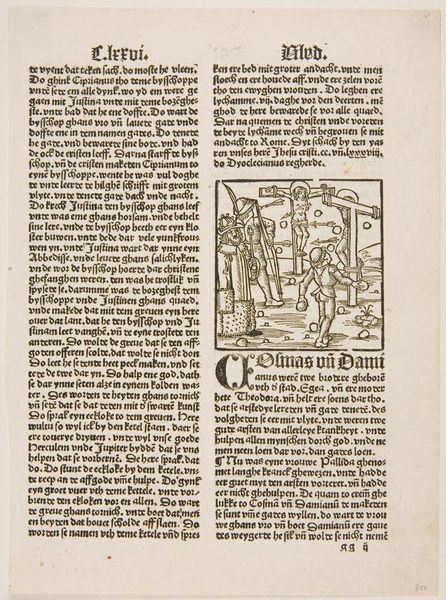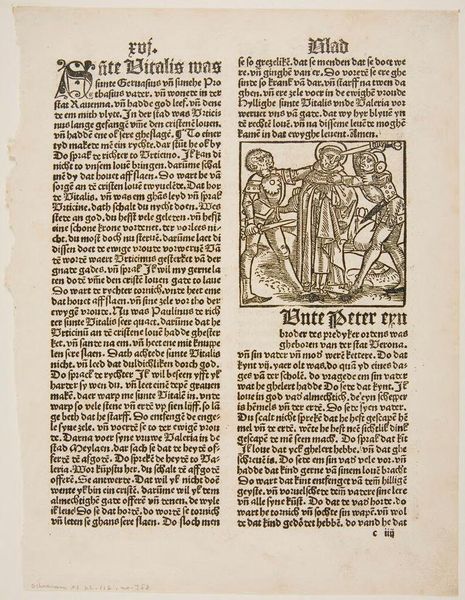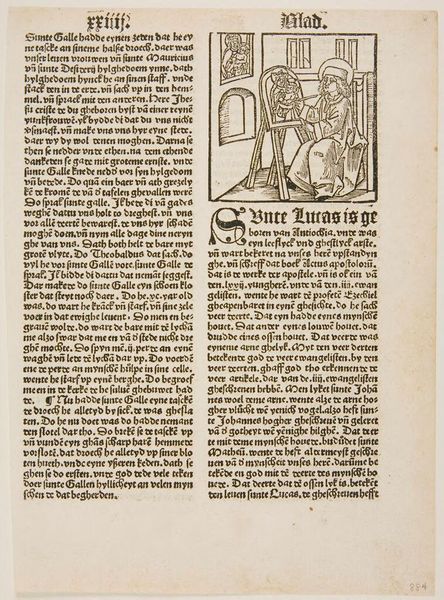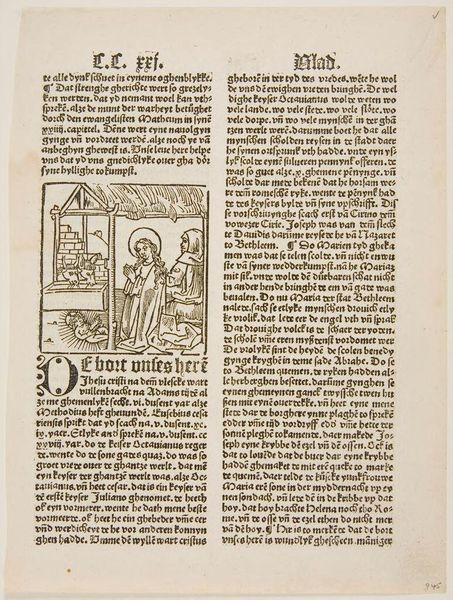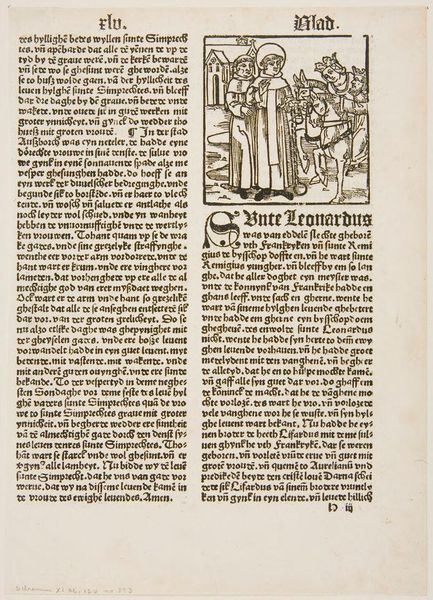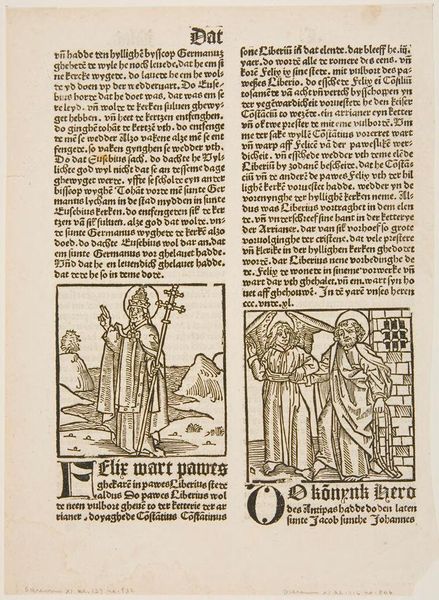
Copyright: CC0 1.0
Curator: Here we have an intriguing woodcut, titled "John the Abbot." It's an anonymous piece, and its creation date is unknown, but it's part of the Harvard Art Museums' collection. What strikes you initially? Editor: The stark contrast of the black lines against the pale background creates a really striking, almost severe mood. It feels very intentional, like it's making a statement about the depicted life. Curator: Precisely. These prints were often part of larger narratives, meant to instruct or inspire. Look at the two vignettes. The first shows John standing, holding what appears to be a staff and a book, in front of a church, while the second shows manual labour, implying a narrative around devotion and work. Editor: It's interesting how these images reinforce the notion of monastic life as both spiritually elevated and grounded in physical labor. But I wonder, for whom was this image created? Was it meant to inspire others to join the monastic order, or was it an affirmation for those already within it? The framing within textual blocks makes me wonder if it was part of a larger piece of literature. Curator: Yes, these images were often part of printed books aimed at both religious and lay audiences. They served not only as illustrations but also as didactic tools, reinforcing particular ideologies and social norms. It’s a fascinating glimpse into the cultural landscape of the time. Editor: It does give us so much to think about, especially when considering how these images shaped people's understanding of religion, work, and identity.
Comments
No comments
Be the first to comment and join the conversation on the ultimate creative platform.
